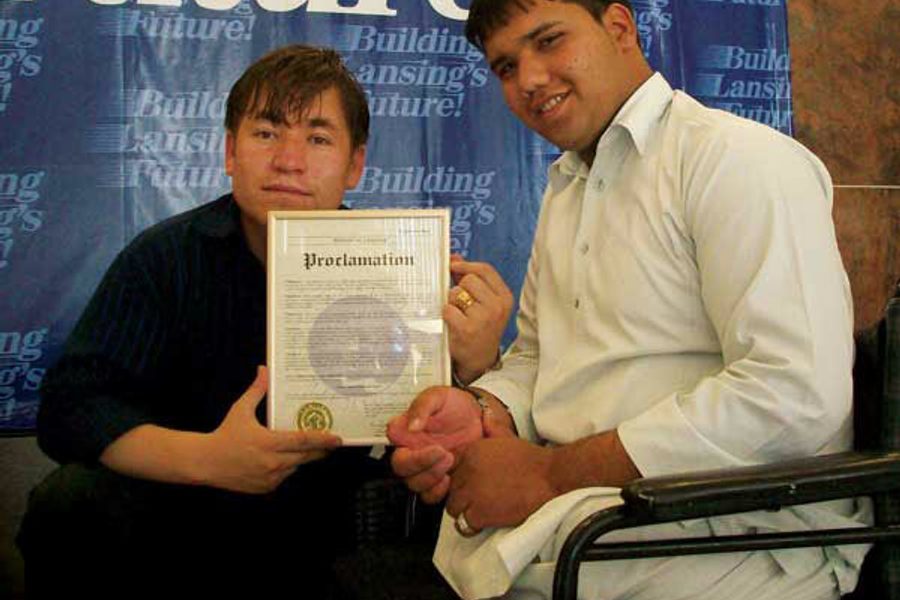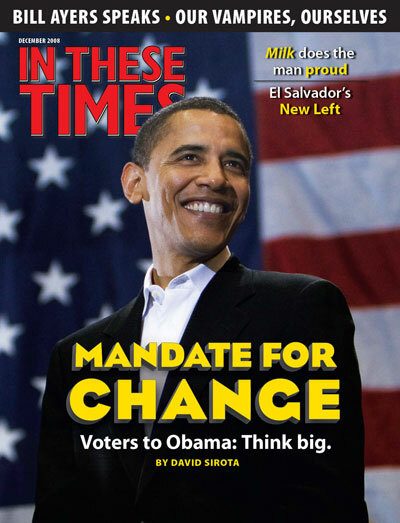Ban the Cluster Bomb
More than 100 countries have agreed to stop using them. Guess which one hasn’t
Brian Cook

In late 2001, Soraj Ghulam Habib, a 10-year-old boy living in Herat Province in western Afghanistan, was walking home from a picnic with his cousin and some friends when he noticed a yellow canister. Because its color was the same as the parcels of food aid that the U.S. military had been dropping during its campaign against the Taliban, Soraj picked it up and attempted to pry it open.
The canister, however, wasn’t food aid, but an unexploded BLU-97 – one of the hundreds of “bomblets” or submunitions released from U.S. cluster bombs. As Soraj tried to open it, it suddenly became hot, and he threw it to the ground, where it exploded. The blast killed his cousin, injured three of his friends and cost Soraj his right index finger and both of his legs.
“I had a lot of dreams at the beginning of my life,” Soraj, now 17, said through his Dari interpreter Sulaiman Safdar, at the Cluster Bomb Survivors Tour’s Oct. 7 stop in Chicago. “But cluster submunitions destroyed all my dreams and put me in a wheelchair.”
The event – sponsored by the Friends Committee on National Legislation, a Quaker peace lobby – also included heart-rending testimony from Raed Mokaled, whose son Ahmad was killed in a 1999 submunitions accident while celebrating his fifth birthday at a park in southern Lebanon; and from Lynn Bradach, whose 21-year-old son Travis, a U.S. Marine, was killed in 2003 while attempting to detonate unexploded cluster submunitions outside of Kerbala, Iraq.
The Survivors Tour traveled through several Midwestern states in October to rally public and political support for banning cluster bombs, a weapon decried by human rights organizations for its indiscriminate effects on civilians and for its failure to explode rates of up to 30 percent.
In particular, the tour focused on the Cluster Munitions Civilian Protection Act – a congressional bill that would restrict the use, sale and transfer of cluster munitions with a failure rate higher than 1 percent – and the Oslo Process, an international treaty banning the weapons that will open for signatory countries on Dec. 3.
Norway initiated the Oslo Process in February 2007, partly in frustration over U.S. foot-dragging during discussions from 2001 to 2006 to ban the weapons through the U.N. Convention on Certain Conventional Weapons (CCW) treaty. (Nine months after Oslo was launched, the United States reversed its stance, and now insists that restrictions on cluster bombs should only be addressed through the CCW.) The treaty negotiations proceeded quickly, and on May 28, 2008, 107 countries – including Britain and other NATO allies – reached an agreement in Dublin, Ireland, to ban cluster bombs.
The treaty calls for its signatories to end cluster bomb use and destroy all stockpiles within eight years, as well as for the clearance of all unexploded ordinance within 10 years. It also includes a provision that requires countries to provide “victim assistance” to those harmed by cluster bombs. Oslo’s provisions will become international law six months after the legislatures of 30 signatory countries have ratified it.
Questions remain, however, over whether the treaty’s lofty goals – in particular, its provisions on clearing cluster bombs within a decade – can be met.
In Laos, for instance, where the United States dropped 2 million tons of bombs during its “Secret War” from 1964 and 1973, at least 9 million cluster bomblets are still strewn throughout the country.
Also speaking at the tour’s Chicago event was Jim Harris, a retired Wisconsin schoolteacher who now runs We Help War Victims, a nongovernmental organization. Harris has worked with foreign companies that detonate unexploded ordinance in Laos, and he estimates the number of bombs that his crew was able to clear in one year was 1,600.
“Never in my lifetime, in Lao, will we clean up the mess that we created there,” Harris says. “Unless we stop using this ordinance, it’s going to be here to haunt us for generations to come.”
Equally problematic are the powerful countries that haven’t signed the treaty: China, India, Israel, Pakistan, Russia, South Korea and, of course, the United States, which Human Rights Watch (HRW) estimates has a stockpile of up to 1 billion submunitions.
But Steve Goose, executive director of the arms division at HRW, believes the treaty’s stigmatization of cluster bombs can affect the behavior of even the countries that don’t sign on. He cites the 1999 Ottawa landmine treaty, which, despite not being signed by any of the aforementioned nations, has essentially stopped all countries from trading landmines or further employing them.
“By stigmatizing a weapon, by making just the consideration of its use beyond the pale,” Goose says, “you can have an impact even on those who are not part of the treaty.”
For Soraj, what’s most frustrating about Washington’s intransigence to the Oslo Process is that the United States has also heavily pressured Afghanistan not to join. Asked what he might say to President Obama if he should meet him, Soraj says, “Think for a moment of your children and what you would do if they were like me, and let Afghanistan join the Oslo Process.”
He adds with a smile: “And when the United States participates in Oslo, it will feel like I got my legs back.”

I hope you found this article important. Before you leave, I want to ask you to consider supporting our work with a donation. In These Times needs readers like you to help sustain our mission. We don’t depend on—or want—corporate advertising or deep-pocketed billionaires to fund our journalism. We’re supported by you, the reader, so we can focus on covering the issues that matter most to the progressive movement without fear or compromise.
Our work isn’t hidden behind a paywall because of people like you who support our journalism. We want to keep it that way. If you value the work we do and the movements we cover, please consider donating to In These Times.







